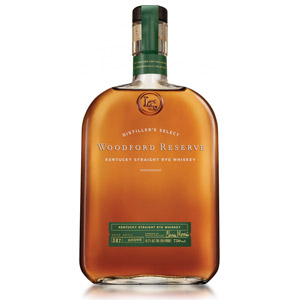Blended scotch is so rooted in the global consciousness that most people have to be taught what single malt is, since they’ve typically only encountered blends like Johnnie Walker and Chivas Regal. Even Blended Malt has become more widely understood by consumers, who can appreciate things like Monkey Shoulder and releases from Compass Box. So why, then, is the idea of a blended American whiskey so unfamiliar that I can’t name a single product on the shelf that matches that description?
Stellum, a new brand launched by celebrated independent bottler and blender Barrell Craft Spirits, seeks to establish a foothold in this empty market niche. While Barrell seems to be targeting the highest end of the bourbon market, with single barrels of cask-strength American whiskies retailing for more than $90, Stellum seems to be aiming for the middle of the market with a “blend of straight ryes” and “blend of straight bourbons”, also at cask strength, retailing for around $55.
In a way, these are more akin to the category of blended malt scotch (the artist formerly known as vatted malt) since they are blends of familiar, fully-flavored bourbons and ryes without mixing in lower-cost whiskies. That’s a thin argument, in fairness, because the “grain whisky” that is mixed into single malts to create blended scotch is not very different from bourbon. Both are made from a mix of grains that is predominantly corn and both are often distilled on a column still. My mixed metaphor aside, I view a “blend of straight bourbons” or a “blend of straight ryes” as closer to the Compass Box side of the market than the Chivas side.
Stellum Spirits Rye is a cask-strength blend of straight rye whiskies distilled in Indiana (so that’s MGP), Kentucky, and Tennessee. The vast majority of the blend is MGP rye, and even the marketing materials references how the heart of the blend is a 95% rye mashbill, a familiar mashbill to fans of MGP-sourced ryes. This blend is bottled at a rousing 58.12% ABV. The stated goal of the brand is to create “streamlined” blends that showcase the essential attributes of rye and bourbon. This is similar to how scotch blenders approach their art: turning something wild and variable and unpredictable into something reliable and predictable and approachable.
Thanks to Aaron at Ro-Bro Marketing for the sample!
Nose: Strong nose tickle, but accompanied by a nice dried fruit aroma that reminds me of good Calvados (spongy dried apples). This seems to be well-matured rye, without any of the resinous piney or eucalyptus notes of young rye. A rest in the glass reveals tart fruit punch, cinnamon bread, and mild baking spices.
Palate: Medium bodied, almost syrupy. A powerful tongue burn (of course), is followed by mulled cider, light anise (licorice), toasty cereal, and a moderate dose of oak sugars. Complex.
Finish: Medium-long. The finish turns slightly dry, with mouth-drying barrel tannins. There is a nice persistent tart top note (cherry, maybe) that carries through to the end. Fades slowly, picking up menthol and black pepper on the tail end.
With Water: A splash of water initially amps up the nose tickle. After a brief rest in the glass, there is more licorice (almost fennel) in the aroma, and the palate picks up a brambly berry note. I suggest using water to find an appropriate drinking strength, but it’s not required.
Overall: A successful cask-strength rye. I like the balance of oak sweetness with classic rye spices, plus that unusual set of apple notes. As noted, there are no hints of “young rye” pine/grass, which speaks to sufficient maturation in oak. I wouldn’t call this my new favorite sipping rye, but it would make some incredible cocktails (I always think whiskey-based cocktails benefit from cask-strength whiskies) and can also serve as a reliable high-proof rye for idle sipping or experimentation via proofing down with water.
As for the brand’s intention, I think this could fairly be called a “streamlined” rye, with rounded essential rye characteristics and no off-putting hard edges. The price is a little high even for well-matured MGP rye, but what isn’t these days?
Update: Here’s a review of the blend of bourbons from Stellum.









I think the reason “American Blended Whiskey” isn’t more popular is that it’s basically the Wild West of categories. People love to crap on Canadian whisky as a category, but American Blended Whiskey can contain GNS (which isn’t permitted in Canadian whisky), flavourings (which are more regulated in Canadian whisky than in American Blended), etc. The thought of dropping some hard earned money on a bottle that MIGHT be mostly GNS/vodka isn’t all that appealing to most whiskey drinkers.
Here is a good rundown of how Bourbon and Blended Scotch are similar – and how they are different.
https://scotchwhisky.com/magazine/ask-the-professor/24527/how-are-bourbon-and-grain-whisky-different/